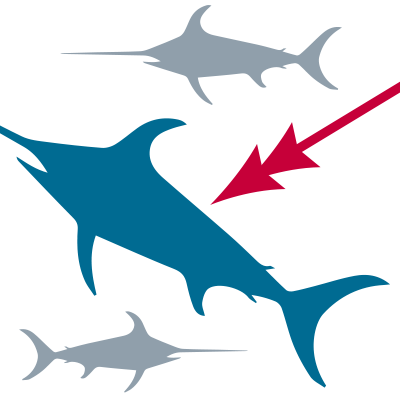Thanks for being a responsible shopper! You look for the eco-label when you buy seafood.
Play our game to see if you can guess which fisheries are guaranteed sustainable, by the Marine Stewardship Council.
From the 8 example fisheries below, select all you believe to be eco-certified as sustainable.
Click ‘Reveal Answers’ when you’re done to see if you guessed correctly.
Play our game to see if you can guess which fisheries are guaranteed sustainable, by the Marine Stewardship Council.
From the 8 example fisheries below, select all you believe to be eco-certified as sustainable.
Click ‘Reveal Answers’ when you’re done to see if you guessed correctly.

A tuna fishery that encircles dolphins, sometimes injuring and killing them

The Mexican Pacific PAST purse seine fishery for yellowfin and skipjack tuna use a fishing method that deliberately tracks pods of dolphins then encircles them with their nets to catch the tuna swimming alongside.
Dead and injured dolphins are thrown back to the sea.
Dead and injured dolphins are thrown back to the sea.

Fishing with a hand held harpoon for large swordfish one at a time

The population of swordfish in the North Atlantic is healthy after a ten-year recovery plan was followed. Skilled fishermen spot and harpoon the swordfish one at a time in the Atlantic waters off Canada resulting in quickly chilled swordfish and no unwanted animals caught.

A swordfish fishery that injures and kills thousands of sharks and many endangered sea turtles

The Canadian North West Atlantic pelagic longline fishery certified for swordfish puts out lines up to 60 km long with 1500 hooks. These hooks catch thousands of sharks, hundreds of endangered sea turtles, and other unwanted animals that are injured or killed and thrown back while the fishery keeps the swordfish. The certification has not required any increase in observers or reduction in the number of blue sharks or endangered sea turtles that can be hooked.

A fishery that drags heavy nets around ancient deep sea corals, crushing them to catch a fish that can live to be 150 years old

This New Zealand bottom trawling fishery is in search of orange roughy. Past fishing has caused population collapses likely because the fish don’t reproduce until they are 30 years old and can’t stand constant fishing pressure. They live on special deep ocean seamounts whose coral communities have taken decades, if not hundreds of years to grow, and are wiped out when the heavy net goes over them.

A skipjack tuna fishery that catches fish one-by-one on single hook fishing poles and lines

The population of skipjack tuna caught in the Maldives pole and line fishery is healthy. Many fishers standing on the deck of a boat, each with a single pole and barbless hook on a line, catch the fish quickly and efficiently from big schools of tuna one by one resulting in few other unwanted animals, if any, being caught.

A fishery that uses nets to encircle a floating object placed in the ocean and the whole school of tuna it attracts along with hundreds of baby silky sharks and other animals also attracted to the object in the process

The Echebastar Indian Ocean purse seine fishery for skipjack will be the first fishery certified by MSC that primarily uses ‘Fish Aggregating Devices’, human made floating islands that attract schools of tuna out in the open ocean. Skipjack tuna are the target and are a healthy population of fish to be caught. The problem is that all sorts of other vulnerable and less abundant animals are also attracted to FADs like silky sharks, sea turtles, rays, and overfished yellow fin tuna and these are scooped up and killed or injured along with the certified target fish.

Fishing for dense schools of herring with nets that don’t touch the bottom

The mid-water trawl fishery for herring in the North Sea scoops up schools of short-lived, quick to reproduce herring without touching the bottom of the ocean. There are very few other animals found in the herring schools and the fishery appears relatively clean in terms of unwanted bycatch or injury to other fish.

A fishery whose nets kill hundreds of seabirds, including the critically endangered Salvin’s albatross

As the New Zealand bottom and midwater trawlers pull the full nets of hoki fish into the boat, they also kill and injure many seabirds trying to eat fish from the nets or those escaping nearby. Despite MSC awarding them new certifications, the annual death count of seabirds in this fishery has actually increased in the last few years and it continues to threaten the survival of the critically endangered Salvin’s and other albatross species. Also, this fishery negatively impacts the critically endangered Maui dolphins.